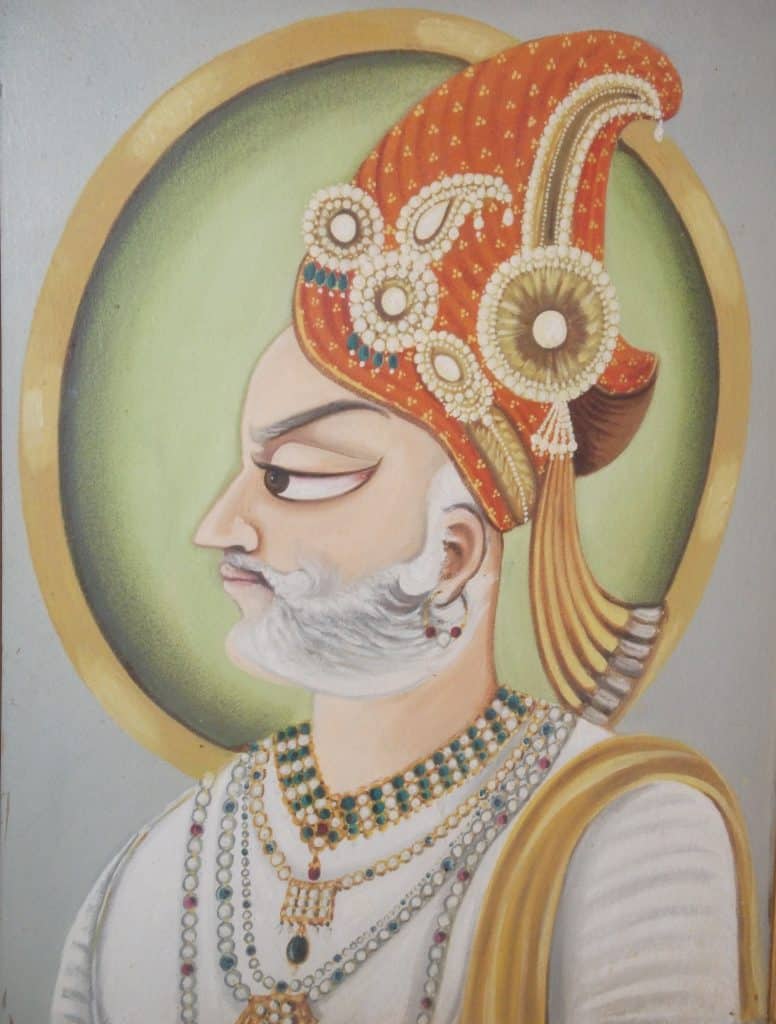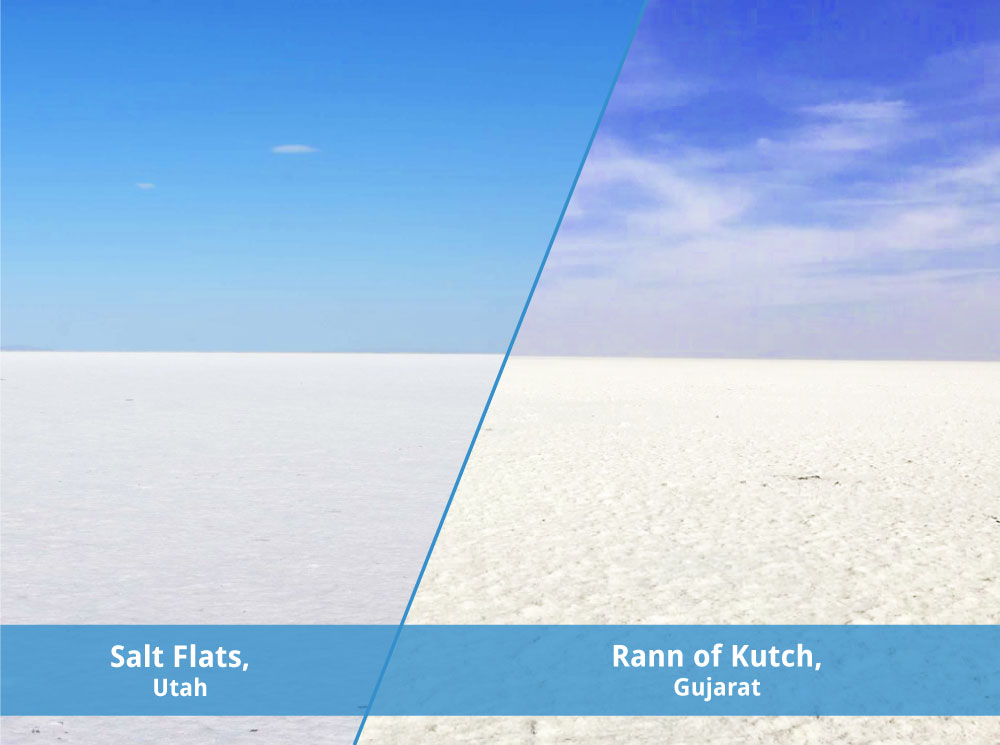Silence. That’s the first sensation that hits you at the threshold of any fort, a serene hush, punctuated only by the occasional cooing of pigeons and the reverberation of your footsteps. This quietness has accompanied me on my journeys to numerous forts across India, a journey driven by a passion for exploring historical edifices, which naturally led me to Rajasthan, a land rich in historical forts. After immersing myself in the historical splendours of Jodhpur, I felt a pull towards the city of Jaisalmer. I booked a cab from Jodhpur to Jaisalmer, to visit the Jaisalmer Golden Fort, a place I read so much about and eagerly anticipated visiting.
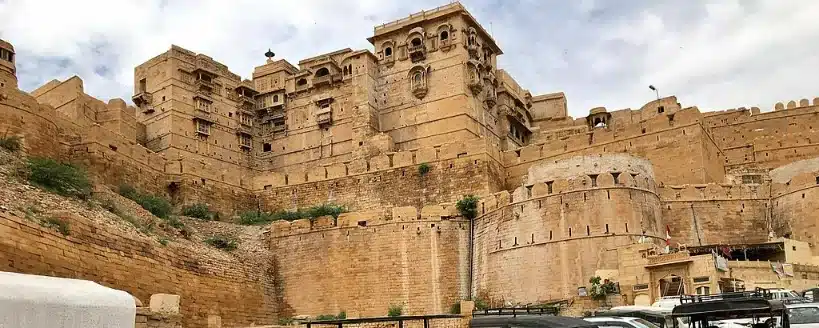
However, contrary to my preconceived images of forts, Jaisalmer Golden Fort defied all expectations. Near its main entrance, a series of quaint shops peddling various souvenirs hinted at the usual fort ambience. I was greeted by a bustling market scene, evocative of the quintessential household bustle – laundry being aired, children’s laughter as they chased each other, and the sporadic hiss of a pressure cooker. Cows here are practically royalty, and cannons are more of a scenic bench than weaponry. The silent, ghostly forts I was used to? This wasn’t one of them.
Jaisalmer Golden Fort – Secrets of a rent-free society
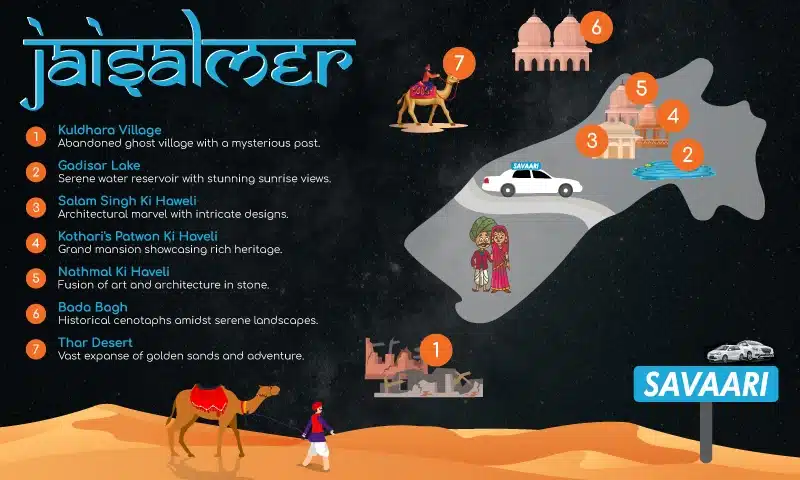
Jaisalmer Golden Fort was buzzing with energy, a place where history shakes hands with the present. The idea of eerie, abandoned forts was known to me, but a fort brimming with life was a revelation. Knowing that Jaisalmer Golden Fort, a celebrated UNESCO World Heritage site, stands as India’s only ‘living’ fort did little to brace me for its splendour in reality. Urban living is all about that rent life, but here, they’re living the dream rent-free. It’s like finding out there’s a secret society where no one has ever heard of a lease agreement.
Historical digs say that families, especially those from the Brahmin and Rajput clans who’ve been here forever, have been enjoying this rent-free lifestyle inside this desert castle since it was built in 1156 by Rawal Jaisal. Today, about 5,000 souls call it home. This revelation not only captivated my curiosity but also inspired a deeper dive into the fort’s history and the lives of its inhabitants. Here is everything I’ve gathered about this extraordinary fort.
Jaisalmer Golden Fort – Where history lives and breathes
In 1156, the foundation of Jaisalmer Golden Fort was laid by Rawal Jaisal of the Bhatti Rajput clan, upon discovering the strategically positioned Trikuta Hill. He chose this location for two pivotal reasons: its vantage point provided a clear view over the expansive desert, essential for spotting incoming threats, and a sage’s prophecy foretold that a descendant of Lord Krishna, to which Rawal Jaisal’s lineage traced back, would establish a formidable stronghold there.
Legend holds that Lord Krishna himself guided Rawal Jaisal to erect the fort atop Trikuta Hill, offering a commanding position to survey distant enemy advances and bolster defences against invasions. Thus, the Jaisalmer Golden Fort came into being, marking its place as a significant historic fortification worth exploring in Rajasthan.
Strategically situated along the ancient trade routes linking India with Central Asia, Egypt, and beyond, the fort became a thriving nexus for commerce during the medieval era. Its prime location fostered flourishing trade in silk, spices, and precious stones, drawing merchants and adventurers from afar. The architectural design of Jaisalmer Golden Fort, with its golden sandstone walls, was primarily defensive, engineered to repel enemy assaults and safeguard its residents. Throughout its history, the fort withstood several major battles, underscoring its strategic importance in the Thar Desert.
The legacy of Jaisalmer Fort – Prophecy, battles, and challenges
A prophecy had predicted the fort would face “two and a half battles,” which materialized. The first confrontation in the 1290s saw Alauddin Khilji wreak havoc in retaliation for an assault on his caravan by Rawal Jait Singh, culminating in a tragic mass self-immolation by the fort’s women. The second onslaught in 1530 by Amir Ali Afghan resulted in a hurried and grim end for the women inside, with no time for traditional rituals. The “half battle” occurred in 1541 when Mughal Emperor Humayun’s advance was diplomatically thwarted, averting major disaster through a marital alliance with Akbar, Humayun’s son.
During its zenith, Jaisalmer Golden Fort blossomed as a cultural hub, inspiring the creation of splendid palaces, havelis, and temples adorned with meticulous carvings and artistry. However, the fort’s fortunes waxed and waned over the centuries. The decline of the Silk Route trade and the establishment of maritime ports by the British posed economic challenges. Additionally, the fort has faced the ravages of time, natural elements, and human impact, leading to the deterioration of some of its historic structures. Despite these challenges, the fort remains a living monument, with families who have resided there for generations continuing to preserve its legacy.
Living rent-free – The fascinating world of Jaisalmer Fort’s dwellers
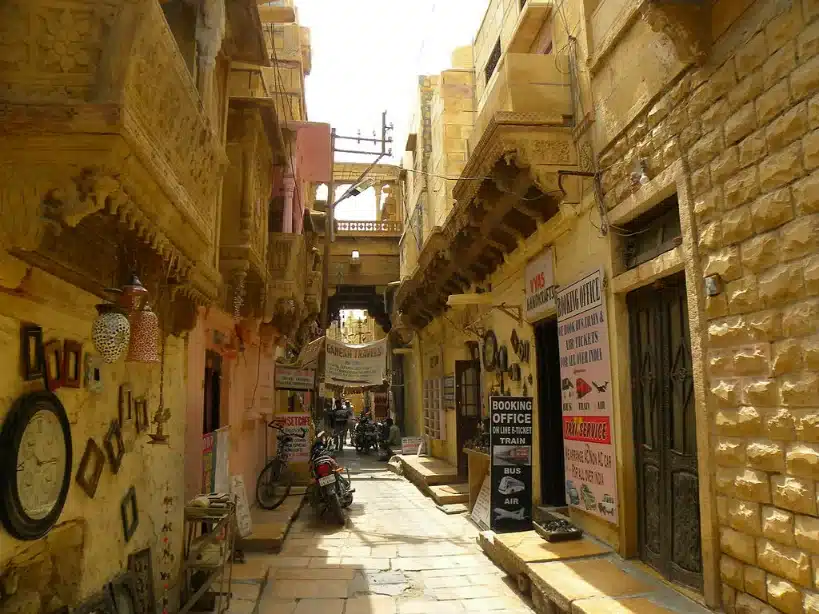
As I wandered through the fort, I was greeted by shopkeepers in colorful turbans, offering a glimpse into the local culture with their vibrant crafts and unique items like ‘magic Viagra bedsheets.’ Their friendly calls to check out their goods, “No charge for looking, madam,” made the atmosphere welcoming. Stopping for a tea break led me to meet Vimal, a local who revealed his family had lived in the fort for over 700 years, serving as teachers and advisors to the rulers of Jaisalmer up until the mid-20th century. This historical privilege had allowed his extended family to accumulate 42 residences within the fort’s venerable walls over seven centuries and 23 generations.
Now, the fortress bustles with life, its narrow streets lined with tea shops, cafes, guesthouses, and temples, each nook filled with the enterprise of its residents. From restaurants to shops selling exquisite camel leather handbags, the locals have found a way to weave tourism into their livelihoods without losing the essence of their close-knit community. Today, the fort is a bustling mix of tea shops, cafes, guesthouses, and temples, with locals making a living from tourism. Some run eateries, while others sell handcrafted bags. Despite the influx of visitors, the community remains close-knit, often celebrating weddings and events together. Vimal explained that the sense of community and generations of living without paying rent, a privilege granted by the ancient kings, are why they continue to live here. This story of enduring heritage and tight-knit community life highlights the unique living tradition of the Jaisalmer Fort.
From past to future – The evolving fate of Jaisalmer Golden Fort
The unique charm of Jaisalmer Golden Fort as a “living fort” comes with its own set of challenges. Decades of habitation without rent, alongside the visible cracks and foundational issues, underscore the toll that time and continuous occupancy have taken. Despite being a protected heritage monument under the care of the Archaeological Survey of India (ASI), the fort faces significant preservation hurdles. The ASI’s restrictions, while aimed at conserving the fort’s historical integrity, are hampered by the lack of financial backing for maintenance, particularly of private residences within the fort. The very fabric of the fortress, built on fragile sedimentary rock and undermined by an outdated drainage system, is at risk. Unregulated construction efforts have only worsened the situation, leading to the deterioration of the sandstone walls.
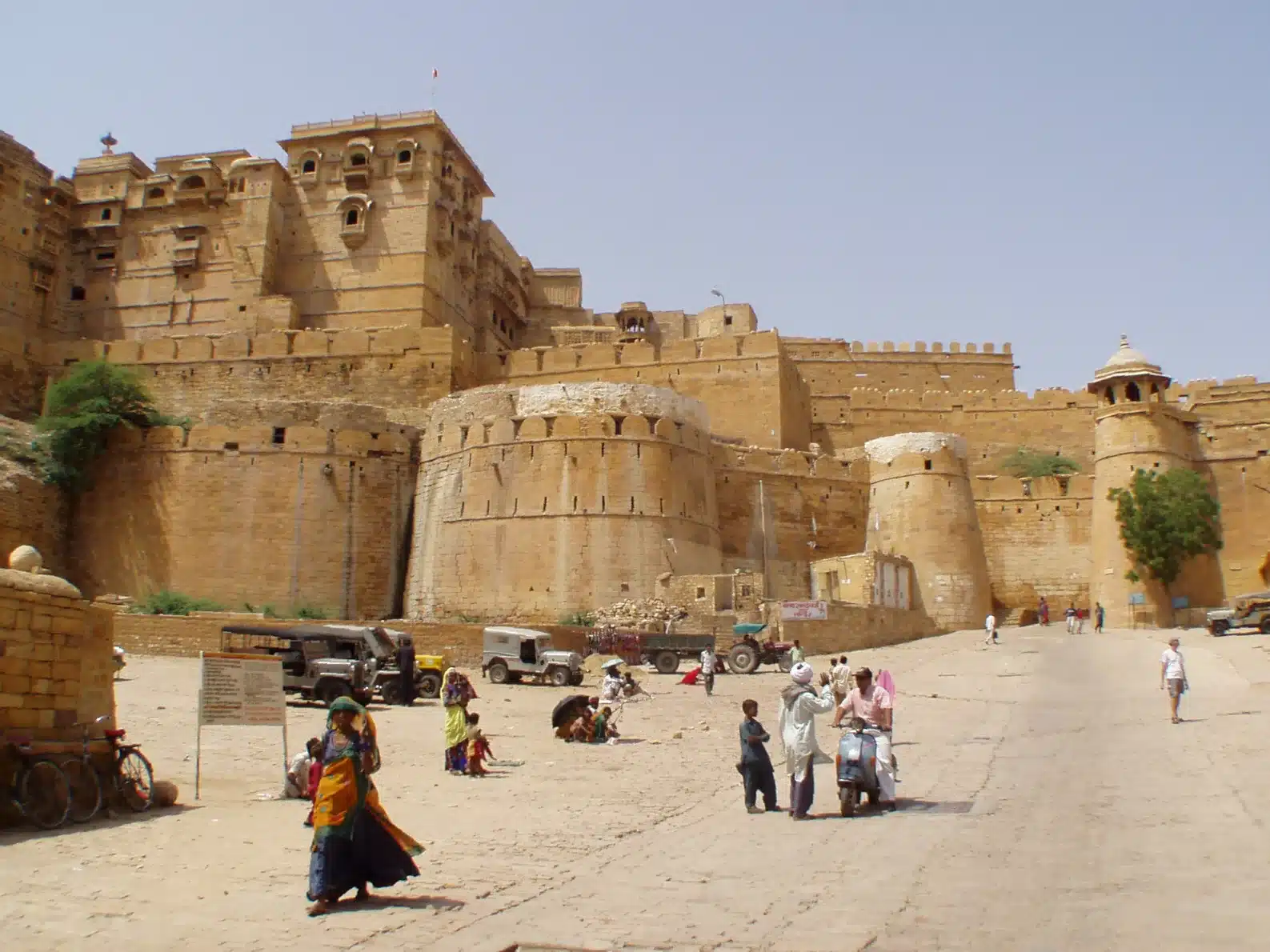
Living within these ancient walls, I witness firsthand the precarious balance between preserving a monumental piece of history and accommodating the growing needs of its residents. Families expand their dwellings upwards, adding strain to the already burdened foundations. The fort has stood resilient against the tests of time and conflict for centuries, yet now, it faces an internal threat from the very lives it shelters. The involvement of the community, as suggested by Chaitanya Raj Singh, the current King of Jaisalmer, seems a vital step towards safeguarding its heritage. The uncertainty of the fort’s future weighs heavily, prompting a reflection on the balance between preservation and modern living within this living monument.
Exploring the Jaisalmer Golden Fort – A deep dive into its attractions
As I meandered through the ancient, winding paths of the Jaisalmer Golden Fort, I was struck by a profound sense of wonder. Each step seemed to unravel a new layer of history, each turn revealing a vista more breathtaking than the last. Inside the Jaisalmer Golden Fort, you can witness an array of attractions that echo the fort’s historical grandeur. Below is a guide to experiencing the essence of the fort.
Admire the grand entrances
The majestic entrances of Jaisalmer Golden Fort are not just architectural marvels but also historical gateways. Each gate, pointing in a cardinal direction, tells a story of its own. The east-facing Ganesh Pol is notable for its embedded statue of Lord Ganesha, symbolizing prosperity and good fortune. Nearby, the Suraj Pol, or Sun Gate, offers a picturesque view of the sunrise over the Thar Desert, painting the sky in vibrant hues. The Bhuta Pol, known as the gate of demons, faces west and holds tales of ancient legends. The south-facing Hawa Pol, or Wind Gate, offers a respite with its cooling breezes, a welcome relief during the scorching summer months.
Discover the royal palace and suites
The Raj Mahal stands as a centerpiece within the fort, embodying the luxurious lifestyle of the Bhati Rajput kings. This palace is a treasure trove of art, with its walls and ceilings adorned with intricate carvings, mirror work, and frescoes that depict tales of valor, love, and devotion. The elegance of Rajput architecture is evident in every corner, offering visitors a glimpse into the opulent past of Jaisalmer’s royalty.
Explore historical sites
The fort’s landscape has historical monuments that serve as silent witnesses to the past. The royal cenotaphs, or chhatris, are beautifully crafted structures that commemorate the lives of Jaisalmer’s rulers. The ancient step-wells and water reservoirs within the fort are marvels of engineering, providing a sustainable water source for the fort’s inhabitants, just as they did centuries ago.
Visit Jain Temples
The Jaisalmer Jain Temple complex is a spiritual oasis within the fort, consisting of seven temples dedicated to various Tirthankaras. These temples, dating back between the 12th and 15th centuries, are masterpieces of Jain architecture, renowned for their detailed carvings, serene statues, and elaborate artwork that narrates Jain mythology and teachings.
Stroll along the ramparts
Walking the perimeter of the fort along its ancient ramparts offers a panoramic view that stretches across the city to the desert horizon. The experience of watching the sunset from these walls is unparalleled, as the fort’s sandstone facades glow in the evening light, merging with the desert’s golden tones.
Experience the Palace Museum
The Jaisalmer Fort Palace Museum is a repository of Jaisalmer’s heritage, housing an impressive collection that includes royal regalia, weapons, ornate garments, and artifacts from the royal court. This museum provides a deep dive into the cultural and historical context of the region, enhancing visitors’ understanding of its rich legacy.
Stay within the fort
Offering accommodations ranging from budget guesthouses to luxurious Jaisalmer fort hotels, staying within the fort allows visitors to immerse themselves in its historical ambience. These lodgings are often housed in buildings that are architectural gems themselves, providing a unique experience of living history.
Celebrate the Jaisalmer Desert Festival
Each February, the otherwise arid and enigmatic Thar Desert bursts into life during the annual Desert Festival. This three-day cultural extravaganza offers a vivid showcase of Rajasthani culture. Set against the magnificent backdrop of Jaisalmer Golden Fort, the Desert Festival is meticulously organized by the state tourism department, featuring captivating musical performances, intriguing competitions, unique beauty contests, and delectable local cuisine for you to savour. It also boasts an exquisite exhibition of handicrafts that are a rarity elsewhere in the country. Click here to learn more about the Jaisalmer Desert festival.
Enjoy local cuisine at cafes
Nestled within the fort’s alleys are quaint cafes and restaurants where visitors can indulge in local culinary delights. From spicy Rajasthani curries to sweet delicacies, these eateries offer a taste of local flavors against the backdrop of the fort’s timeless beauty.
Shop for handicrafts
The labyrinthine lanes of the fort are lined with shops selling an array of traditional Rajasthani handicrafts, textiles, leather goods, and jewelry. Shopping here is not just about acquiring souvenirs but also about experiencing the vibrant local culture and artistry. Bargaining is part of the experience, allowing visitors to engage with shopkeepers and learn the stories behind their crafts. Acquiring the Rajasthani horn and bone art is a must, as it harks back to the era of our Neanderthal ancestors. Click here to explore more about this unique souvenir and other collectables to be found in India.
Each of these experiences within Jaisalmer Golden Fort offers visitors a chance to step back in time and explore the rich tapestry of history, culture, and art that has shaped this living fort in Rajasthan over the centuries.
Pro tips for visiting Jaisalmer Golden Fort – Insider insights
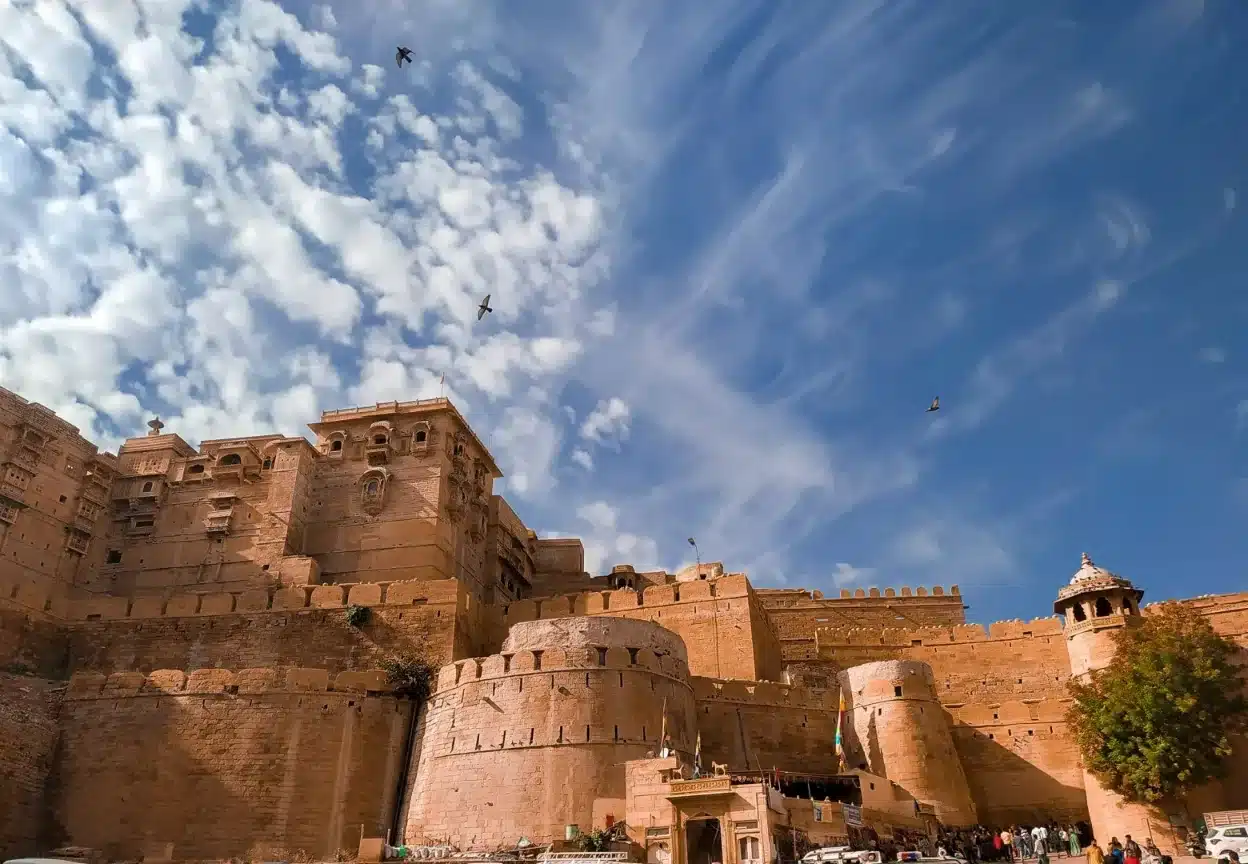
Visiting Jaisalmer Golden Fort promises an unforgettable journey through time. However, to make the most of your exploration, there are several key considerations to keep in mind:
Limited vehicle access
The pathways leading to the fort are notably narrow, precluding the possibility of driving your own vehicle directly to the entrance. Opting for a car rental service with a chauffeur is advisable, as the driver can wait for you outside while you immerse yourself in the fort’s historical ambiance.
Wear comfortable footwear
Expect a fair amount of walking on uneven and possibly steep surfaces. Comfortable, sturdy footwear is essential to navigate the fort’s pathways and explore its vast expanse without discomfort.
Stay hydrated
Rajasthan’s climate can be quite warm, especially outside the winter months. Carrying water with you is crucial to stay hydrated during your visit.
Respect the local culture
Jaisalmer Golden Fort is not just a tourist attraction but also a living community. Demonstrating respect for the residents and their culture, including dressing modestly and behaving courteously, enhances the experience for everyone.
Be mindful of preservation efforts
Given its status as a UNESCO World Heritage site and the ongoing conservation efforts, visitors have to be mindful of their impact on the fort’s integrity. This means not littering, avoiding touching or climbing on fragile structures, and adhering to designated paths.
Photography considerations
You can photograph, but specific areas, especially temples and private homes, may have restrictions. Always seek permission before capturing photos. Photography fees are INR 50 for a camera and INR 100 for a video camera.
Consider the schedule
Regarding Jaisalmer Fort timings, it typically welcomes guests from 9:00 AM to 6:00 PM daily. Nonetheless, please be aware that these hours may vary, particularly in observance of holidays or specific occasions.
Budget for entry fees and donation
Jaisalmer Fort entry fees are INR 50 per person for Indian nationals and INR 250 per person for foreigners. Keep this in mind to manage your budget accordingly for entry and any additional donations within temples or museums.
By keeping these points in mind, your visit to Jaisalmer Golden Fort can be both enjoyable and respectful of this historical masterpiece and its community.
Jaisalmer beyond the fort – Jaisalmer’s diverse attractions
Beyond the majestic walls of Jaisalmer Golden Fort, the city unfolds a tapestry of historical richness, cultural vibrancy, adventurous escapades, and mysterious allure. This golden city, nestled in the heart of the Thar Desert, invites travellers to immerse themselves in experiences that are both enchanting and unforgettable. Booking an hourly car rental for your transportation needs in and around Jaisalmer can ensure a smooth commute. Here’s a guide to making the most of your journey around Jaisalmer Golden Fort.
Experience the serenity of Gadisar Lake
Just a stone’s throw from the Jaisalmer Golden Fort, Gadisar Lake offers a tranquil retreat. The lake, surrounded by ghats adorned in Rajputana and Mughal architectural styles, presents a picturesque setting for witnessing breathtaking sunsets. Embark on a boat ride or stroll along its banks to capture the serene beauty and magical dusk moments.
Explore the grandeur of Jaisalmer’s Havelis
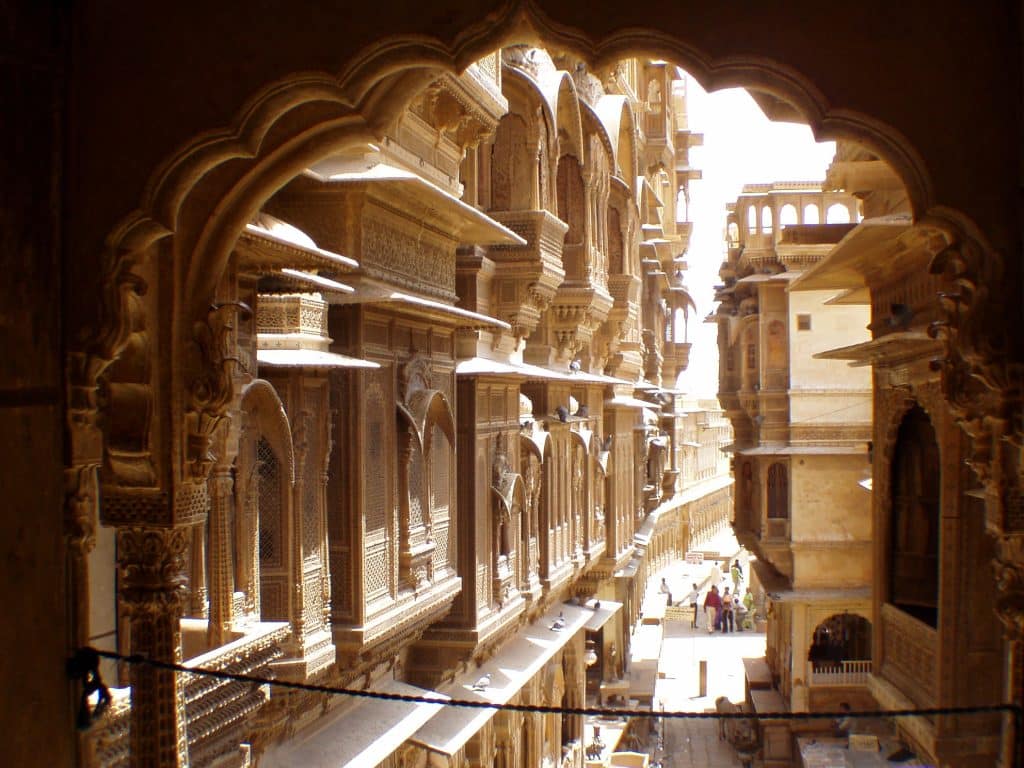
The vicinity of Jaisalmer Golden Fort is dotted with opulent havelis that once belonged to wealthy merchants and nobles. Patwon ki Haveli, Nathmal ki Haveli, and Salim Singh ki Haveli stand out with their intricate designs, elaborate carvings, and the stories they hold within their walls. Patwon Ki Haveli Jaisalmer was built in the early 1800s by Guman Chand Patwa, who was an affluent merchant from Jaisalmer. It is one of the largest Havelis in Jaisalmer. It is famous for attractive gateways, archways, wall paintings & beautifully carved balconies. The architectural marvel of Jaisalmer Haveli offers a glimpse into the lavish lifestyles of their former occupants.
Take a day trip to the Jaisalmer border
A journey to the outskirts of Jaisalmer leads to the Jaisalmer War Memorial, a tribute to the heroes of the 1971 Indo-Pak War, situated near the Longewala border. Close by, the revered Tanot Mata Temple stands, believed to guard the region’s soldiers. This excursion combines patriotism with spirituality, offering a poignant reminder of the area’s strategic significance.
Embark on a desert safari in the Thar Desert
A visit to Jaisalmer is incomplete without venturing into the vastness of the Thar Desert. Whether it’s a camel ride at dusk or a thrilling jeep safari, the desert’s golden sands provide a playground for adventure seekers. Engage in activities like sandboarding, dune bashing, or ATV rides, and consider spending a night in a desert camp for an unforgettable stargazing experience.
Visit the renowned Bada Bagh
Bada Bagh, also called Barabagh is a garden complex located about six kilometers north of Jaisalmer. Overlooking a mango grove sits a set of royal chhatri cenotaphs constructed by the Maharajas of the Jaisalmer State in the 18th, 19th and early 20th centuries CE.
Discover the mystery of Kuldhara Village
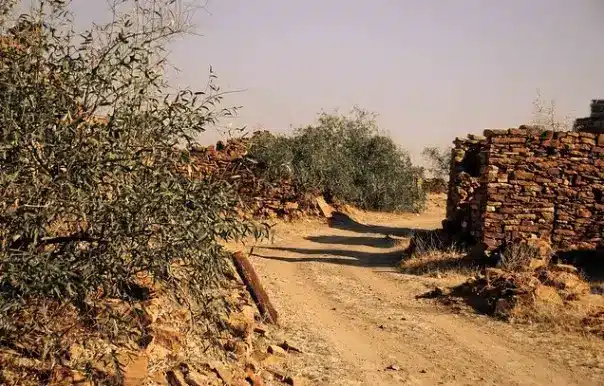
About 20 km from Jaisalmer lies Kuldhara Village, shrouded in legends and considered one of Rajasthan’s most haunted sites. Allegedly cursed and abandoned overnight in the 19th century, the village now stands as a ghostly monument to its mysterious past. Exploring its deserted lanes and dilapidated houses offers a chilling yet intriguing adventure. Delve into the secrets of this haunted Kuldhara village by clicking here.
Why visit Jaisalmer, Rajasthan with Savaari?
As I stood amidst the timeless grandeur of Jaisalmer Golden Fort, I was profoundly moved by the living legacy that echoes through its ancient walls. For generations, families have called this majestic fort home, nurturing its history and culture, and preserving the very essence of Rajasthan’s past. Visiting this fort and Jaisalmer promises not just a glimpse into history, but a multi-faceted journey—a fusion of architectural marvels, vibrant markets, and the warm hospitality of its residents.
The story of Jaisalmer Fort is a testament to resilience and heritage, where the sands of time have not eroded its spirit. It serves as a living embodiment of Rajasthan’s glorious past and its vibrant present. To truly embrace the glory of this fort and discover the enchanting places that surround Jaisalmer, I recommend the Savaari app. With Savaari, you can relish the freedom of embarking on multiple detours, guided by knowledgeable chauffeurs who unlock the hidden gems of the region. This seamless experience ensures that your journey through Jaisalmer and its wonders is nothing short of extraordinary.
Last Updated on February 13, 2024 by blogadmin



